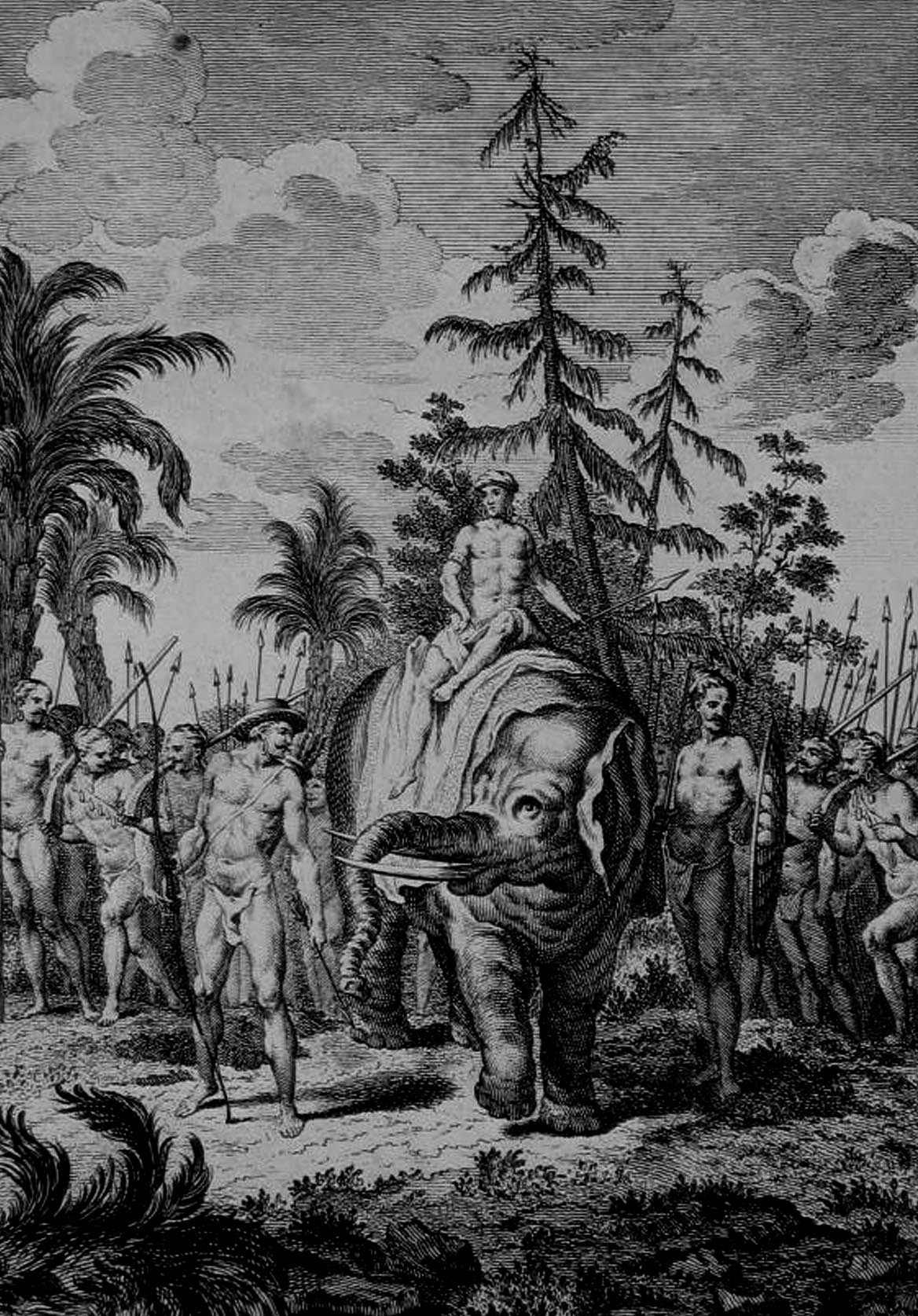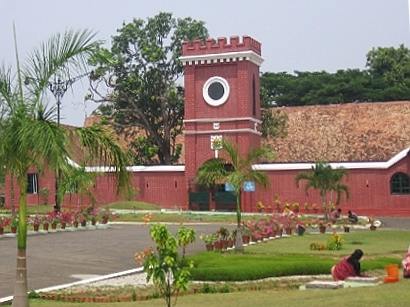|
Nairs
The Nair , also known as Nayar, are a group of Indian Hindu castes, described by anthropologist Kathleen Gough as "not a unitary group but a named category of castes". The Nair include several castes and many subdivisions, not all of whom historically bore the name 'Nair'. Fuller (1975) p. 309 These people lived, and continue to live, in the area which is now the Indian state of Kerala. Their internal caste behaviours and systems are markedly different between the people in the northern and southern sections of the area, although there is not very much reliable information on those inhabiting the north. Fuller (1975) p. 284 Historically, Nairs lived in large family units called ''tharavads'' that housed descendants of one common female ancestor. These family units along with their unusual marriage customs, which are no longer practiced, have been much studied. Although the detail varied from one region to the next, the main points of interest to researchers of Nair marriage cust ... [...More Info...] [...Related Items...] OR: [Wikipedia] [Google] [Baidu] |
Sambandam
Sambandham was an informal mode of marriage followed by Nairs, Samantha Kshatriyas, Kshatriyas, and Ambalavasis Ambalavasi, more properly Ampalavasi, ( ml, അമ്പലവാസി; IAST: Ampalavāsi; ) is the generic name for a group of castes among Hindus in Kerala, India, who have traditionally rendered temple services. Castes The Ambalavasis are b ... among their own communities as well as with the Nambudiris, in what is the present day state of Kerala, India. All of these were matrilineal communities. Sambandham also denoted reciprocal marriage among Nairs and this term was not just used to denote hypergamous marriages between the Nambudiris and the Nairs. The custom is no longer observed. Alternate names for the system were used by different social groups and in different regions; they included ''Pudavamuri'', ''Pudavakoda'', ''Vastradanam'', ''Vitaram Kayaruka'', ''Mangalam'' and ''Uzhamporukkuka''. Practice Among Nairs The Nair women were allowed to ... [...More Info...] [...Related Items...] OR: [Wikipedia] [Google] [Baidu] |
Nair Brigade
The Nair Brigade was the army of the erstwhile kingdom of Travancore in India. Nairs were a warrior community of the region. The personal bodyguard of the king Marthanda Varma (1706–1758) was also called ''Thiruvithamkoor Nair Pattalam'' (Travancore Nair Army). The Travancore army was officially referred as the Travancore Nair Brigade in 1818. In the early years, only Nairs were admitted into this brigade. Later, the unit was expanded and several sub-units were formed. The name Nair Brigade remained unchanged, even following the admittance of non-Nairs. The headquarters of the brigade was in Thiruvananthapuram (Trivandrum). History The army of Travancore was modernised by Marthanda Varma, who is known as "the maker of modern Travancore".The first Commander in Chief of his army was Kumaraswamy Pillai,''Travancore State Manual'pdf Digital book/ref> who was a veteran soldier. Thanu Pillai, brother of then Dalawa Arumukham Pillai was made the Lieutenant Commander. He defeated t ... [...More Info...] [...Related Items...] OR: [Wikipedia] [Google] [Baidu] |
Nambudiri
The Nambudiri (), also transliterated as Nampoothiri, Nambūdiri, Namboodiri, Nampoothiri, and Nampūtiri, are a Malayali Brahmin caste, native to what is now the state of Kerala, India, where they constituted part of the traditional feudal elite, owning a large portion of the land in the region of Malabar until the Kerala Land Reforms starting in 1957, and intermarrying with the Nair monarchs and aristocracy through sambandham. They have historically been distinguished by rare practices such as the adherence to Śrauta ritualism, the Pūrva-Mīmāṁsā school of Hindu philosophy, and orthodox tradition, as well as many idiosyncratic customs unique among Brahmins, including primogeniture. Cyriac Pullapilly mentions that the dominating influence of the Nambudiris was to be found in all matters: religion, politics, society, economics and culture of Kerala. History Origin Nambudiri mythology associates their immigration to Kerala from the banks of Narmada, Krishna, K ... [...More Info...] [...Related Items...] OR: [Wikipedia] [Google] [Baidu] |
Travancore
The Kingdom of Travancore ( /ˈtrævənkɔːr/), also known as the Kingdom of Thiruvithamkoor, was an Indian kingdom from c. 1729 until 1949. It was ruled by the Travancore Royal Family from Padmanabhapuram, and later Thiruvananthapuram. At its zenith, the kingdom covered most of the south of modern-day Kerala ( Idukki, Kottayam, Alappuzha, Pathanamthitta, Kollam, and Thiruvananthapuram districts, and some portions of Ernakulam district), and the southernmost part of modern-day Tamil Nadu ( Kanyakumari district and some parts of Tenkasi district) with the Thachudaya Kaimal's enclave of Irinjalakuda Koodalmanikyam temple in the neighbouring Kingdom of Cochin. However Tangasseri area of Kollam city and Anchuthengu near Attingal in Thiruvananthapuram district, were British colonies and were part of the Malabar District until 30 June 1927, and Tirunelveli district from 1 July 1927 onwards. Travancore merged with the erstwhile princely state of Cochin to form Tr ... [...More Info...] [...Related Items...] OR: [Wikipedia] [Google] [Baidu] |
Indian Independence Movement
The Indian independence movement was a series of historic events with the ultimate aim of ending British Raj, British rule in India. It lasted from 1857 to 1947. The first nationalistic revolutionary movement for Indian independence emerged from Bengal. It later took root in the newly formed Indian National Congress with prominent moderate leaders seeking the right to appear for Indian Civil Service (British India), Indian Civil Service examinations in British India, as well as more economic rights for natives. The first half of the 20th century saw a more radical approach towards self-rule by the Lal Bal Pal, Lal Bal Pal triumvirate, Aurobindo Ghosh and V. O. Chidambaram Pillai. The final stages of the independence struggle from the 1920s was characterized by Congress' adoption of Mahatma Gandhi's policy of non-violence and Salt March, civil disobedience. Intellectuals such as Rabindranath Tagore, Subramania Bharati, and Bankim Chandra Chattopadhyay spread patriotic awarenes ... [...More Info...] [...Related Items...] OR: [Wikipedia] [Google] [Baidu] |
Pliny The Elder
Gaius Plinius Secundus (AD 23/2479), called Pliny the Elder (), was a Roman author, naturalist and natural philosopher, and naval and army commander of the early Roman Empire, and a friend of the emperor Vespasian. He wrote the encyclopedic '' Naturalis Historia'' (''Natural History''), which became an editorial model for encyclopedias. He spent most of his spare time studying, writing, and investigating natural and geographic phenomena in the field. His nephew, Pliny the Younger, wrote of him in a letter to the historian Tacitus: Among Pliny's greatest works was the twenty-volume work ''Bella Germaniae'' ("The History of the German Wars"), which is no longer extant. ''Bella Germaniae'', which began where Aufidius Bassus' ''Libri Belli Germanici'' ("The War with the Germans") left off, was used as a source by other prominent Roman historians, including Plutarch, Tacitus and Suetonius. Tacitus—who many scholars agree had never travelled in Germania—used ''Bella Germa ... [...More Info...] [...Related Items...] OR: [Wikipedia] [Google] [Baidu] |
Chris Fuller (academic)
Christopher John Fuller is an emeritus professor of anthropology at the London School of Economics and a Fellow of the British Academy. He has studied and written extensively about the people of India, particularly with regard to subjects such as Hinduism, the caste system, and the relationship between globalisation and the middle-classes. Career Fuller was a lecturer in the Department of Social Anthropology at the University of Manchester prior to holding a similar position as lecturer in anthropology at the London School of Economics (LSE) between 1979–87. He was a reader in anthropology at the LSE between 1987–94 and has been an emeritus professor of anthropology there since 2009. Fuller's primary area of field research has been the state of Tamil Nadu, particularly between 1976–2001 at the Hindu temple in Madurai that is dedicated to Minakshi. His first fieldwork was among the Nair and Syrian Christian communities of Kerala in 1971–72. Fuller has also conducted fieldw ... [...More Info...] [...Related Items...] OR: [Wikipedia] [Google] [Baidu] |
Nāga
The Nagas (IAST: ''nāga''; Devanāgarī: नाग) are a divine, or semi-divine, race of half-human, half-serpent beings that reside in the netherworld (Patala), and can occasionally take human or part-human form, or are so depicted in art. A female naga is called a Nagi, or a Nagini. According to legend, they are the children of the sage Kashyapa and Kadru. Rituals devoted to these supernatural beings have been taking place throughout South Asia for at least 2,000 years. They are principally depicted in three forms: as entirely human with snakes on the heads and necks, as common serpents, or as half-human, half-snake beings in Hinduism, Buddhism, and Jainism. ''Nagaraja'' is the title given to the king of the nagas. Narratives of these beings hold cultural significance in the mythological traditions of many South Asian and Southeast Asian cultures, and within Hinduism and Buddhism, they are the ancestral origins of the Nagavanshi Kshatriyas. Etymology In Sanskrit, a () ... [...More Info...] [...Related Items...] OR: [Wikipedia] [Google] [Baidu] |
Nayak (title)
The Nayak is a historic Indian title conferred on Sardars, who were governors of feudal states in the Middle Ages. Today it is also a surname. Nayaks are mostly Hindu and few Sikhs, who follow Hinduism and Sikhism respectively. As a surname Today, the surname ''Nayak'' is used by various castes and ethnic groups across India. Mostly they belong from forward class and mainly follows Sikhism and Hinduism. * Nayak, or Naik is a title used by Koli caste of Maharashtra. The Princely State of Jawhar was founded by a Koli Nayak Jayaba Mukne around 1300. The Maval region was known as Koli country of fifty two valleys in Maratha Empire. Each valley was controlled by a Koli Nayak and the Sirnayak, or head chief, lived at Junnar, and presided over the gotarni, or caste council. the Fort of Sinhagad was built and ruled by Koli chief Nag Nayak who resisted the Mughal Sultan Muhammad bin Tughluq for eight months. the Kolis of Maharashtra revolted against Mughal ruler Aurang ... [...More Info...] [...Related Items...] OR: [Wikipedia] [Google] [Baidu] |
Anthropologist
An anthropologist is a person engaged in the practice of anthropology. Anthropology is the study of aspects of humans within past and present societies. Social anthropology, cultural anthropology and philosophical anthropology study the norms and values of societies. Linguistic anthropology studies how language affects social life, while economic anthropology studies human economic behavior. Biological (physical), forensic and medical anthropology study the biological development of humans, the application of biological anthropology in a legal setting and the study of diseases and their impacts on humans over time, respectively. Education Anthropologists usually cover a breadth of topics within anthropology in their undergraduate education and then proceed to specialize in topics of their own choice at the graduate level. In some universities, a qualifying exam serves to test both the breadth and depth of a student's understanding of anthropology; the students who pass ... [...More Info...] [...Related Items...] OR: [Wikipedia] [Google] [Baidu] |
Dravidian Peoples
The Dravidian peoples, or Dravidians, are an ethnolinguistic and cultural group living in South Asia who predominantly speak any of the Dravidian languages. There are around 250 million native speakers of Dravidian languages. Dravidian speakers form the majority of the population of South India and are natively found in India, Pakistan, Afghanistan, Bangladesh, the Maldives, Nepal, Bhutan and Sri Lanka. Dravidian peoples are also present in Singapore, Malaysia, South Africa, Myanmar, East Africa, the Caribbean, and the United Arab Emirates through recent migration. Proto-Dravidian may have been spoken in the Indus civilization, suggesting a "tentative date of Proto-Dravidian around the early part of the third millennium", after which it branched into various Dravidian languages. with whom they intensively interacted. Genetically, the ancient Indus Valley people were composed of an Iranian hunter gatherers-related and an Ancient Ancestral South Indian (AASI) component, wh ... [...More Info...] [...Related Items...] OR: [Wikipedia] [Google] [Baidu] |





